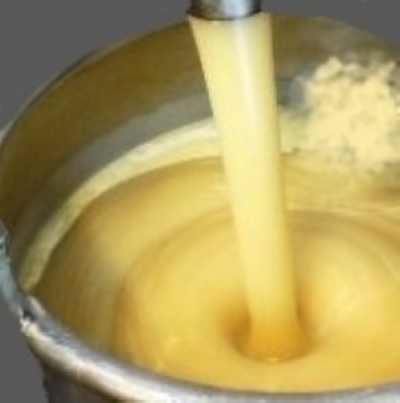De-mystifying Emulsions

Emulsions used in mining applications come in many forms. They are generally mixtures made up of a high concentration of ammonium nitrate (70-80%), along with water, emulsifier and a fuel oil/mineral oil, although many “dual salt” emulsions are now made which reduce the amount of ammonium nitrate and replace this with (usually) calcium nitrate.
Along with the percentage of ammonium nitrate used in emulsions, major differences can be observed that come from the other raw materials that make up the emulsion such as the water content, fuel (or mineral oil), emulsifier, and inhibitors, such as urea.
Because technology (and market competition) has changed so much in the last 20 years, many suppliers see that they can deliver benefits from using different emulsion formulations to help miners achieve their blasting outcomes, and also to offer a point of difference, or value proposition to miners. In the simplest terms, to do this, they modify the percentages of the above raw materials to manufacture a product to suit a specific need. In addition to this, suppliers also manufacture different emulsions for different usage types – e.g. standard emulsion for general applications, inhibited emulsions for reactive ground, heat resistant emulsions for hot ground, and sticky emulsions for upholes in underground mines. There are also emulsions that can be used for long sleep time applications and also where the ground is very wet.
Basically, when it comes down to choosing your emulsion, you should think very carefully about which one to use. Some of the main considerations include, but are not limited to:
• A higher water percentage in the emulsion should result in an equal or lower cost but the emulsion may be prone to other problems such as less sleep time or producing post blast fume;
• A higher emulsifier content will give a more stable emulsion, but you need to question what the operational requirements are, and whether the cost is justified;
• Dual salt emulsions may not be directly comparable to single salt (ammonium nitrate) emulsions due to different ratios of oxidizer (the AN and CN) and water, as well as the relative energy from the CN compared to the AN, which may or may not be a problem for your application;
• What are the delivery equipment considerations to ensure good productivity and safe delivery of the product?
• What density range do you need, and will that require any operational changes?
Typically, explosives suppliers do not provide much detailed technical information about emulsions. However, as a blasting engineer, or purchaser of these products, you should take a keen interest as different emulsions can offer a range of operational improvement opportunities – make sure you understand the pricing and application to ensure value can be obtained. Remember, emulsion prices may try to reflect the value delivered by the product rather than the cost to produce it, particularly for specialised emulsions.
Suppliers focus on the “bulk product” which is delivered down the hole and is usually made up of the emulsion and some other additives such as PPAN, density modifying agents (such as expanded polystyrene or chemical gassing agents), and sometimes diesel or mineral oils. By focusing on the end product, and providing a specification around that, there is less focus on the base emulsion and so it becomes harder for the end-user to have any influence on that component of the product.
When comparing emulsions in a tender process, things can get very interesting because the price per tonne isn’t always the best way to make the comparison and can in fact be “fraught with danger”. This is because different suppliers’ products cannot always be compared in the same way. A better approach is is to compare the cost of the delivered energy (MJ) per kg of product for a given density for each application, whilst ensuring a holistic fit-for-purpose review is also completed.
At Moncourt Group we understand that decisions made about explosives suppliers can be detailed, time consuming and difficult. We provide industry leading insights about explosives and markets, and understand how miners use their explosive products and services. We use this knowledge to deliver and implement better outcomes for our clients when purchasing and using explosives.
© Copyright 2024 Moncourt Group Pte. Ltd. UEN: 201501793G All rights reserved. Legal Privacy Policy


